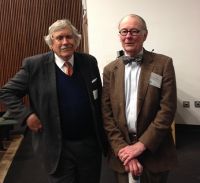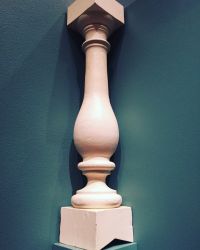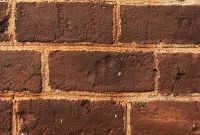New Discoveries in Architecture
Monticello is one of the most beautiful and recognizable houses in America. It’s elegant and harmonious, and it was revolutionary for American architecture at the time. If you ever need a quick reminder of its features, just fish a nickel out of your pocket.
So, when I saw a listing for a conference called New Discoveries of Thomas Jefferson’s Architecture and Design sponsored by the University of Virginia, I was intrigued. Haven’t Jefferson’s buildings been the same for two hundred years? What could be new about them, including Monticello?
 A collection of experts at the conference last week proved me wrong. Digging through the foundations of Monticello’s South Pavilion and sleuthing in libraries (with newly discovered books) have given Ann Lucas and other researchers a fresh look at Jefferson’s genius and contradictions in the field of design. As time passes, UVA Professor Richard Guy Wilson said, “we can see things from a different point of view.” We can reconsider the majesty of Monticello perched atop the mountain alongside the plight of the enslaved workers who lived below it.
A collection of experts at the conference last week proved me wrong. Digging through the foundations of Monticello’s South Pavilion and sleuthing in libraries (with newly discovered books) have given Ann Lucas and other researchers a fresh look at Jefferson’s genius and contradictions in the field of design. As time passes, UVA Professor Richard Guy Wilson said, “we can see things from a different point of view.” We can reconsider the majesty of Monticello perched atop the mountain alongside the plight of the enslaved workers who lived below it.
 When I go to Monticello, I normally admire the dome and columns. But architect Linda Binsted research interests focus on bricks in early America, including Monticello’s handsome brickwork. It was a truly American way for Jefferson to translate the Italian architect Palladio’s designs in a country that did not have ancient Italian marble quarries. She has been on a quest to compare Jefferson’s use of building materials to that in other buildings across America. “They call me Ms. Brick,” she said.
When I go to Monticello, I normally admire the dome and columns. But architect Linda Binsted research interests focus on bricks in early America, including Monticello’s handsome brickwork. It was a truly American way for Jefferson to translate the Italian architect Palladio’s designs in a country that did not have ancient Italian marble quarries. She has been on a quest to compare Jefferson’s use of building materials to that in other buildings across America. “They call me Ms. Brick,” she said.
Jefferson’s importance as a designer was not limited to the physical architecture of Monticello and his other creations. Inside, Susan Stein, Monticello’s senior curator and vice president for museum programs pointed out, the mansion housed one of the most influential and sizable art collections in America at time. Jefferson used his art collection to educate his visitors and family. Outside in a presentation about Poplar Forest, as landscape architect Will Rieley said, Jefferson played with geometry and created natural-seeming features to catch the eye of the viewer. The same was true at Monticello, he argued.
 Monticello historian Niya Bates’s talk, though, provided a reminder of what lay behind all that apparent harmony. The landscape is so beautiful, she said, that it can be hard sometimes to remember so much of the work was performed by enslaved craftsmen. Even those bricks can tell a different story. She showed a poignant photograph of fingerprints in a brick to the left of Monticello’s West portico. Was that left as a memory by an enslaved person, to remind others that he or she was there?
Monticello historian Niya Bates’s talk, though, provided a reminder of what lay behind all that apparent harmony. The landscape is so beautiful, she said, that it can be hard sometimes to remember so much of the work was performed by enslaved craftsmen. Even those bricks can tell a different story. She showed a poignant photograph of fingerprints in a brick to the left of Monticello’s West portico. Was that left as a memory by an enslaved person, to remind others that he or she was there?
The researchers are now back to their libraries and building sites, hunting for the next new revelations. But you can visit the accompanying exhibit, From the Grounds Up, Thomas Jefferson’s Architecture and Design, at the Fralin Museum of Art in Charlottesville. It runs through April 29. Then go back to Monticello to take a fresh look at it—and make your own new discoveries.


